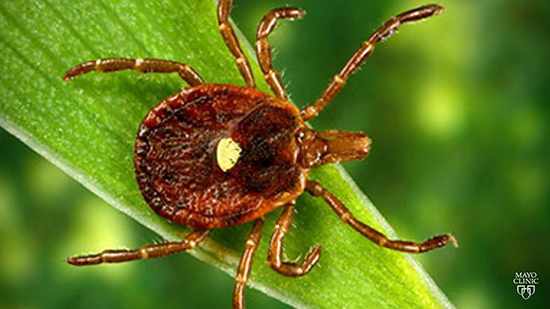-
Infectious Diseases A–Z: How climate is affecting increase in tick-borne illnesses

Tick-borne diseases in the U.S. have tripled in recent years, according to the Centers for Disease Control and Prevention. A new study says a warming climate and other environmental changes may play a role in expanding the regions where ticks can be found. This includes the lone star tick, or (Amblyomma americanum).
"There are multiple factors associated with the rise in tick-borne diseases throughout the U.S., and it does appear that climate change is one of these factors," says Dr. Bobbi Pritt, a parasitic and vector-borne diseases expert at Mayo Clinic. "Climate strongly influences the development and survival of ticks in the wild, as well as animals on which they feed, such as deer, rodents and birds. Some of these important climatic factors are temperature, precipitation and humidity."
"For example, take the time that ticks are out feeding," says Dr. Pritt. "Ticks will generally be out looking for blood meal once the snow melts in the spring, and they will remain active to some extent until the snow falls — temperatures around and above 40F. With climate change and global warming, we are seeing earlier springs and shorter, milder winters, with the end result of there being a longer warm season in which humans may be exposed to tick bites."

"Along with this, the survival and activity of the ticks and animals hosts, such as rodents and deer, is also influenced by climatic factors. Anything that favors increase survival or expansion of these populations can result in an increase in the tick populations. The lone star ticks, in particular, are susceptible to cold winters. Thus global warming may favor their expansion into more northern regions of the country where the winters were previously too cold for the immature ticks to survive.
The lone star tick is common in southern, central and eastern parts of the country and is now reported to be in Midwest and in parts of Canada. The tick can transmits several diseases including ehrlichiosis, alpha gal syndrome (commonly referred to as meat allergy) and a condition called southern tick-associated rash illness.
Dr. Pritt says tick survival and activity increases with temperature up to a point. High temperatures, low humidity and heavy precipitation may decrease tick activity, and prompt ticks to find refuge in woodland. "The length of the season seems to be more important in terms of increased risk of exposure, rather than extremes in temperature."
Other factors that are important to mention, says Dr. Pritt, include modifications to tick and animal habitats, in conjunction with climate change. Examples include habitat fragmentation that creates wooded areas where deer and rodents thrive; loss of biodiversity, such as the loss of the predators that keep deer populations in check; and animal food and habitat resource availability. These modifications to tick and animal habitats will affect the risk of tick exposure for humans. "So, unfortunately, it's a complex story with multiple factors to consider."
Related posts:
- Mayo Clinic Minute: Ways to avoid ticks
- Mayo Clinic Minute: Tips to best remove ticks
- Infectious Diseases A–Z: Lone star tick found in Wisconsin, linked to meat allergy







